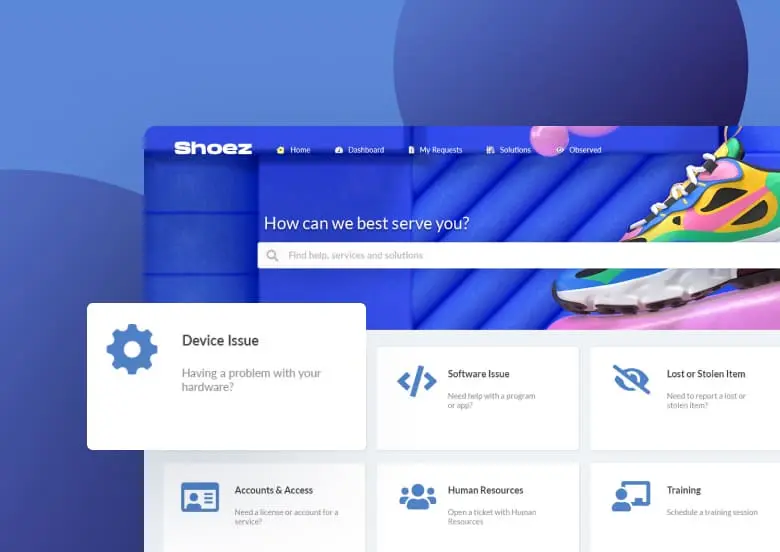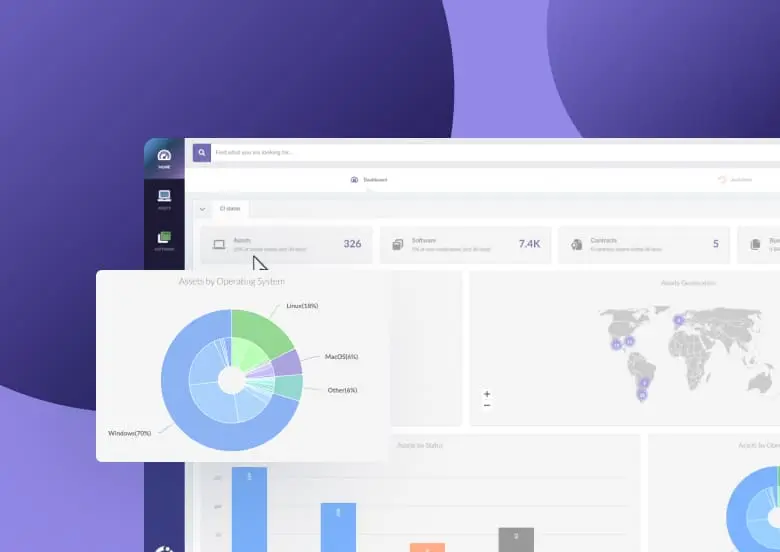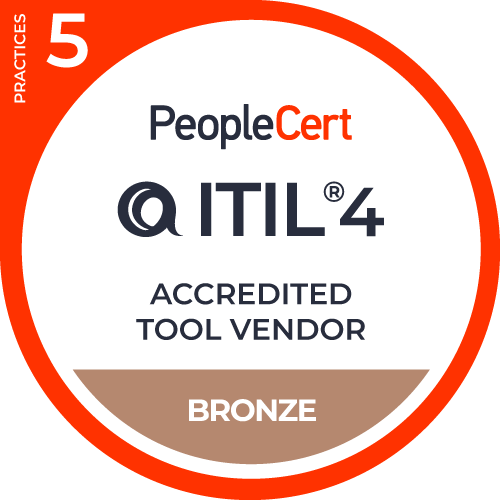In the fast-paced world of IT, ensuring the stability and reliability of your services is crucial. One of the most effective ways to achieve this is through Problem Management best practices. These practices focus on identifying and addressing the root causes of recurring issues, thereby reducing the number of incidents and enhancing the overall quality of your IT services.
By incorporating these best practices, you can create a more resilient IT environment that not only responds to issues more efficiently but also prevents them from occurring in the first place.
This article will guide you through the essential concepts and best practices of Problem Management, helping you to implement them effectively in your organization.
What is Problem Management?
In the realm of IT Service Management (ITSM), Problem Management plays a pivotal role in maintaining the stability and efficiency of IT services. But what exactly is Problem Management? At its core, it is the process of identifying and managing the lifecycle of problems within an IT environment.
Problems are typically underlying issues that cause incidents. By focusing on these root causes, Problem Management aims to prevent incidents from recurring, thereby improving overall service quality and customer satisfaction.
The distinction between incidents and problems is crucial. While incidents are disruptions that need immediate resolution, problems are the underlying causes of these incidents. Effective Problem Management ensures that these root causes are analysed and addressed, reducing the likelihood of future incidents.
This proactive approach to support not only enhances the reliability of IT services but also minimizes downtime, saving both time and resources.
Reactive Problem Management vs. Proactive Problem Management
Problem Management can be approached in two primary ways: Reactive and Proactive Problem Management. Understanding the differences between these types is essential for implementing an effective Problem Management strategy.
- Reactive Problem Management: This type of Problem Management is triggered after an incident occurs. The focus is on identifying the root cause of the incident and resolving it to prevent recurrence. While reactive Problem Management is necessary, it often means that the damage has already been done, leading to potential service disruptions.
- Proactive Problem Management: In contrast, proactive Problem Management aims to identify and resolve potential problems before they result in incidents. This approach involves trend analysis, risk assessments, and continuous monitoring of the IT environment to detect vulnerabilities. Proactive Problem Management is more strategic and can significantly reduce the number of incidents, leading to a more stable IT environment.
Both reactive and proactive Problem Management have their place in a comprehensive ITSM strategy. However, organizations that prioritize proactive Problem Management are likely to experience fewer incidents and a more robust IT infrastructure.

Proactive vs Reactive Change Management: A Full Comparison
5 key benefits of Problem Management
Implementing effective Problem Management best practices offers several benefits that can enhance IT operations and overall business performance. Here are five key advantages:
- Reduced incident volume: By addressing the root causes of incidents, Problem Management helps in minimizing the recurrence of these issues. This leads to a significant reduction in the overall incident volume, freeing up IT resources for more strategic tasks.
- Improved service quality: Problem Management ensures that recurring issues are identified and resolved, leading to improved service reliability and user satisfaction. As a result, the quality of IT services delivered to end-users is enhanced.
- Cost efficiency: Resolving problems at their root causes can prevent the escalation of issues, which in turn reduces the costs associated with incident resolution, downtime, and lost productivity.
- Enhanced knowledge sharing: Problem Management often involves documenting the problem resolution process. This documentation serves as a valuable knowledge base that can be used for future reference, speeding up the resolution of similar issues and promoting knowledge sharing within the organization.
- Increased customer satisfaction: With fewer incidents and improved service quality, end-users experience fewer disruptions, leading to higher levels of customer satisfaction. A stable IT environment builds trust and confidence among users, which is crucial for business success.
5 challenges of Problem Management
While Problem Management offers numerous benefits, it also comes with its own set of challenges. Understanding these challenges is essential for effective implementation:
- Identifying root causes: One of the biggest challenges in Problem Management is accurately identifying the root cause of an issue. This process requires a deep understanding of the IT environment and can be time-consuming.
- Resource allocation: Problem Management requires dedicated resources, including skilled personnel and tools. Balancing these resources with other IT priorities can be challenging, especially in smaller organizations.
- Data availability and analysis: Effective Problem Management relies on accurate and comprehensive data. However, collecting, analyzing, and making sense of large volumes of data can be overwhelming and requires advanced tools and expertise.
- Resistance to change: Implementing Problem Management often requires changes in processes, roles, and responsibilities. This can lead to resistance from staff who are accustomed to existing workflows.
- Continuous monitoring and improvement: Problem Management is not a one-time activity but an ongoing process. Maintaining a continuous focus on Problem Management requires commitment and discipline, which can be challenging in a dynamic IT environment.

8 Steps to Build a Solid Problem Management Process
4 stages of Problem Management
Problem Management is a structured process that involves several stages. Each stage plays a crucial role in ensuring the effective resolution of problems. Let's break down the four stages:
1. Problem identification
The first stage in Problem Management is identifying the problem. This involves detecting patterns in incidents, analyzing them, and recognizing when an issue is not just an isolated incident but a recurring problem.
Effective problem identification often requires collaboration between service desk teams and technical specialists who can analyze incident data to spot trends.
2. Problem categorization and prioritization
Once a problem is identified, it needs to be categorized and prioritized. Categorization helps in organizing problems based on their nature, which can make subsequent analysis and resolution more efficient. Prioritization, on the other hand, involves assessing the impact and urgency of the problem to determine the order in which it should be addressed. High-impact problems that affect critical services should be prioritized to minimize disruptions.
3. Problem diagnosis and resolution
This stage is where the root cause of the problem is identified, and a resolution is developed. Diagnosis often involves detailed analysis, including root cause analysis (RCA) techniques, to pinpoint the exact cause of the problem. Once the root cause is identified, the resolution process begins. This could involve fixing the issue, implementing a workaround, or making changes to prevent the problem from recurring.
4. Problem closure and evaluation
The final stage of Problem Management is closing the problem and evaluating the effectiveness of the resolution. Before closure, it is essential to ensure that the problem has been fully resolved and that there are no lingering issues. An evaluation is conducted to review the Problem Management process and identify any lessons learned. This stage also involves updating the knowledge base with information that can be used for future problem management efforts.
Problem Management best practices
To optimize your Problem Management processes, consider incorporating these eight best practices:
1. Implement a Problem Management policy
Establishing a clear Problem Management policy is the foundation of an effective problem management process. This policy should define the objectives, scope, roles, and responsibilities involved in managing problems within your organization.
By setting clear guidelines, you ensure that everyone involved understands their role in the problem management process, which helps in streamlining operations and avoiding confusion.
A well-defined policy also sets the expectations for how problems should be identified, analyzed, and resolved, ensuring consistency across the organization.
Furthermore, a comprehensive policy provides a framework for continuous improvement. As your IT environment evolves, your problem management policy should be regularly reviewed and updated to reflect changes in technology, processes, and business needs.
By doing so, you ensure that your problem management practices remain relevant and effective, helping your organization stay ahead of potential issues and maintain a stable IT environment.
2. Utilize automation tools
Incorporating automation tools into your Problem Management process can greatly enhance efficiency and accuracy. Automation tools can help in collecting incident data, conducting trend analysis, and generating reports, which reduces the manual effort required from your IT team.
These tools can quickly identify patterns and correlations that might be missed by human analysts, enabling faster identification of root causes and more timely resolutions.
Moreover, automation tools can streamline repetitive tasks, allowing your IT staff to focus on more strategic activities. By reducing the time spent on manual data processing, you can improve the speed and effectiveness of your problem management efforts.
Additionally, automation ensures that critical data is consistently captured and analyzed, providing a solid foundation for making informed decisions and improving overall service quality.

What is Workflow Management? Benefits, Templates, And Automation
3. Foster collaboration across teams
Fostering collaboration across teams is crucial for effective problem management. Problems often span multiple areas of the IT environment, requiring input from various teams to identify and resolve the underlying issues.
Encouraging open communication and collaboration between service desk teams, technical experts, and other stakeholders can lead to faster and more accurate problem resolution. By breaking down silos, you create a more cohesive approach to problem management, ensuring that all relevant perspectives are considered.
Collaboration also promotes knowledge sharing, which is vital for continuous improvement. When teams work together to solve problems, they can share insights and lessons learned, helping to build a collective understanding of the IT environment. This shared knowledge can be invaluable in preventing future incidents and improving the overall effectiveness of your problem management process.
4. Invest in training and development
Investing in training and development for your IT staff is essential to maintain an effective problem management process. The complexities of modern IT environments require a deep understanding of problem management techniques and tools.
By providing ongoing employee training, you ensure that your team is equipped with the latest skills and knowledge needed to identify and resolve problems efficiently. Regular training sessions also keep your staff updated on new tools and methodologies, enabling them to adapt to changes in the IT landscape.
In addition to technical skills (or hard skills), training should also focus on soft skills such as communication and teamwork, which are critical for effective problem management.
Developing these skills can enhance collaboration and ensure that problems are addressed from multiple angles. A well-trained team is more confident and capable of handling complex problems, leading to quicker resolutions and a more stable IT environment.
5. Focus on Proactive Problem Management
Focusing on proactive Problem Management can significantly reduce the number of incidents in your IT environment. Proactive problem management involves regularly conducting risk assessments, trend analyses, and continuous monitoring to identify potential issues before they escalate into incidents.
By anticipating problems and addressing them early, you can prevent disruptions and maintain a more stable IT environment.
Proactive problem management also fosters a culture of continuous improvement. By regularly reviewing and refining your Problem Management strategies, you can identify areas for enhancement and implement changes that improve the overall effectiveness of your IT operations.
This forward-thinking approach not only minimizes the impact of problems but also helps in building a more resilient IT infrastructure that can adapt to future challenges.
6. Document and share knowledge
Documenting and sharing knowledge is a critical aspect of effective problem management. By thoroughly documenting each problem's identification, diagnosis, resolution, and lessons learned, you create a valuable resource that can be referred to when similar issues arise in the future.
This documentation should be detailed and accessible, allowing team members to quickly find the information they need to address recurring problems. A well-maintained knowledge base not only speeds up problem resolution but also reduces the risk of the same problem happening again.
Sharing this knowledge across teams is equally important. When team members have access to a centralized repository of problem management documentation, it fosters a culture of continuous learning and improvement.
Knowledge sharing ensures that everyone in the organization is on the same page, reducing the chances of miscommunication and duplicated efforts. Ultimately, this practice enhances the overall efficiency and effectiveness of your problem management process, leading to a more resilient IT environment.
7. Measure and report on Problem Management performance
Measuring and reporting on Problem Management performance is essential for understanding how well your processes are working and where improvements are needed.
Establishing key performance indicators (KPIs) such as the number of problems identified, the time taken to resolve them, and the frequency of recurring issues allows you to track the effectiveness of your Problem Management efforts. Regularly reviewing these metrics provides insights into areas where your team excels and highlights opportunities for improvement.
Reporting these metrics to stakeholders helps in aligning Problem Management efforts with broader business goals. Transparent reporting ensures that everyone understands the impact of problem management on overall service quality and customer satisfaction.
By consistently measuring and reporting performance, you can make informed decisions about resource allocation, process adjustments, and training needs, ensuring that your problem management practices continue to evolve and improve over time.
8. Continuously improve Problem Management processes
Continuously Improving Problem Management Processes is crucial for maintaining an effective and resilient IT environment. Problem management is not a one-time activity but an ongoing process that requires regular review and refinement. By adopting a mindset of continuous improvement, you can ensure that your problem management practices evolve in response to changes in your IT environment, emerging technologies, and evolving business needs.
To achieve continuous improvement, it's important to regularly evaluate the effectiveness of your Problem Management processes and identify areas for enhancement. This might involve implementing new tools, revising procedures, or providing additional training to your team.
Engaging in regular feedback loops with stakeholders and team members can also provide valuable insights into how your problem management practices can be improved. By committing to continuous improvement, you ensure that your problem management processes remain agile, effective, and capable of addressing the challenges of a dynamic IT landscape.
Final thoughts
Implementing Problem Management best practices is essential for maintaining the stability and reliability of your IT services. By focusing on root causes, you can significantly reduce the number of incidents, improve service quality, and enhance customer satisfaction.
Whether you’re just starting with Problem Management or looking to refine your existing processes, the best practices outlined above provide a solid foundation for success.
Frequently Asked Questions (FAQs)
1. What is the difference between Incident Management and Problem Management?
Incident management focuses on resolving immediate disruptions, while problem management aims to identify and address the root causes of these disruptions to prevent recurrence.
2. Why is Proactive Problem Management important?
Proactive problem management helps in identifying potential issues before they result in incidents, reducing the number of disruptions and improving overall service reliability.
3. How can automation tools help in Problem Management?
Automation tools can streamline the problem management process by automating data collection, trend analysis, and reporting, making it easier to identify and resolve issues efficiently.
4. What are the key challenges in Problem Management?
Key challenges include identifying root causes, resource allocation, data analysis, resistance to change, and maintaining continuous improvement.















